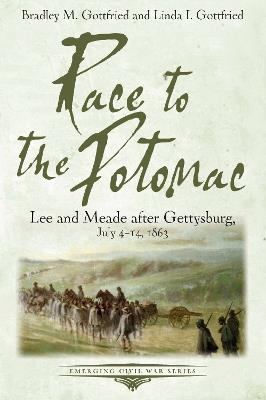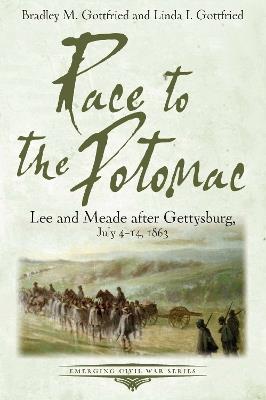L’articolo è stato aggiunto alla lista dei desideri
IBS.it, l'altro eCommerce
Race to the Potomac: Lee and Meade After Gettysburg, July 4-14, 1863
Cliccando su “Conferma” dichiari che il contenuto da te inserito è conforme alle Condizioni Generali d’Uso del Sito ed alle Linee Guida sui Contenuti Vietati. Puoi rileggere e modificare e successivamente confermare il tuo contenuto. Tra poche ore lo troverai online (in caso contrario verifica la conformità del contenuto alle policy del Sito).
Grazie per la tua recensione!
Tra poche ore la vedrai online (in caso contrario verifica la conformità del testo alle nostre linee guida). Dopo la pubblicazione per te +4 punti
Prezzo minimo ultimi 30 giorni: 17,83 €



Tutti i formati ed edizioni
Promo attive (0)
Even before the guns fell silent at Gettysburg, Robert E. Lee was preparing for the arduous task of getting his defeated army back safely into Virginia. It was an enormous, complex, and exceedingly dangerous undertaking, told here in exciting fashion by Bradley M. Gottfried and Linda I. Gottfried in Race to the Potomac: Lee and Meade after Gettysburg, July 4-14, 1863, the latest Emerging Civil War series entry. General Lee’s first major decision was the assembly of two wagon trains, one to transport the wounded and the other to deliver the tons of supplies acquired by the army as it roamed across Pennsylvania and Maryland on the way to Gettysburg. Once the wagons trains were set, he mapped out routes for his infantry and artillery on different roads to speed the journey and protect his command. Unsure of his opponent’s next move, George Meade, the victor of Gettysburg, dispatched Maj. Gen. John Sedgwick’s VI Corps on a reconnaissance-in-force. The thrust found the Confederate infantry in full retreat; Meade finally had the confirmation he needed that Lee was heading back to Virginia. Meade decided to launch a pursuit along different routes hoping to catch his beaten enemy without unduly exposing his own troops to a devastating counterattack or ambush. Union cavalry moved out after the vulnerable Confederate wagon trains, and the encounters that followed, including several engagements with Jeb Stuart’s horsemen, resulted in the loss of hundreds of vehicles and the capture of large numbers of wounded and tons of valuable supplies. The majority of Lee’s wagons reached Williamsport, Maryland, only to find the pontoon bridge gone—cut loose by Union troops in the area. Lee’s army reached Hagerstown, Maryland, largely unscathed and began building a strong defensive line while a pontoon bridge was built across the Potomac at Falling Waters. Meade refused to rush headlong against attack Lee’s new position, and the Confederates began crossing the river on the night of July 13-14. The last of Lee’s troops crossed on the morning of the 14th, thus ending the high-stakes drama of the “race to the Potomac.”
L'articolo è stato aggiunto al carrello
L’articolo è stato aggiunto alla lista dei desideri


